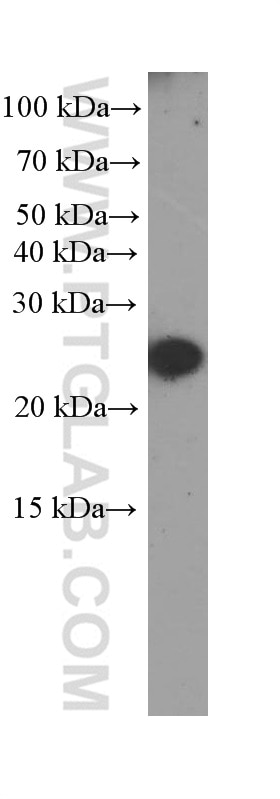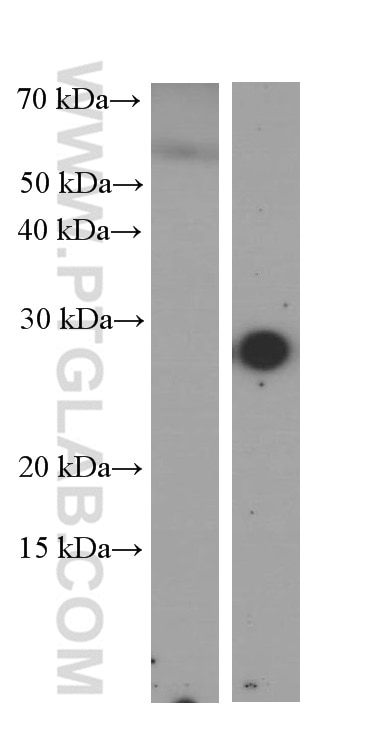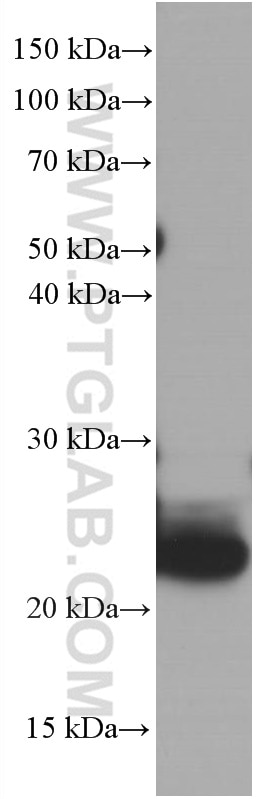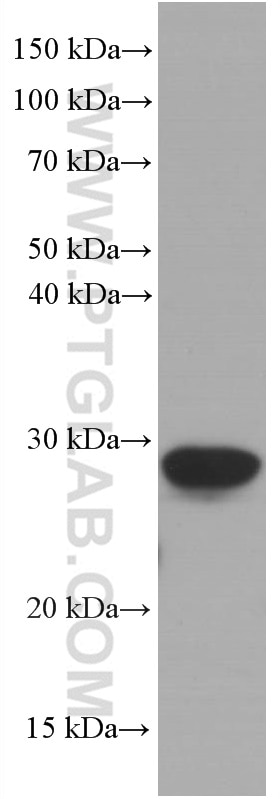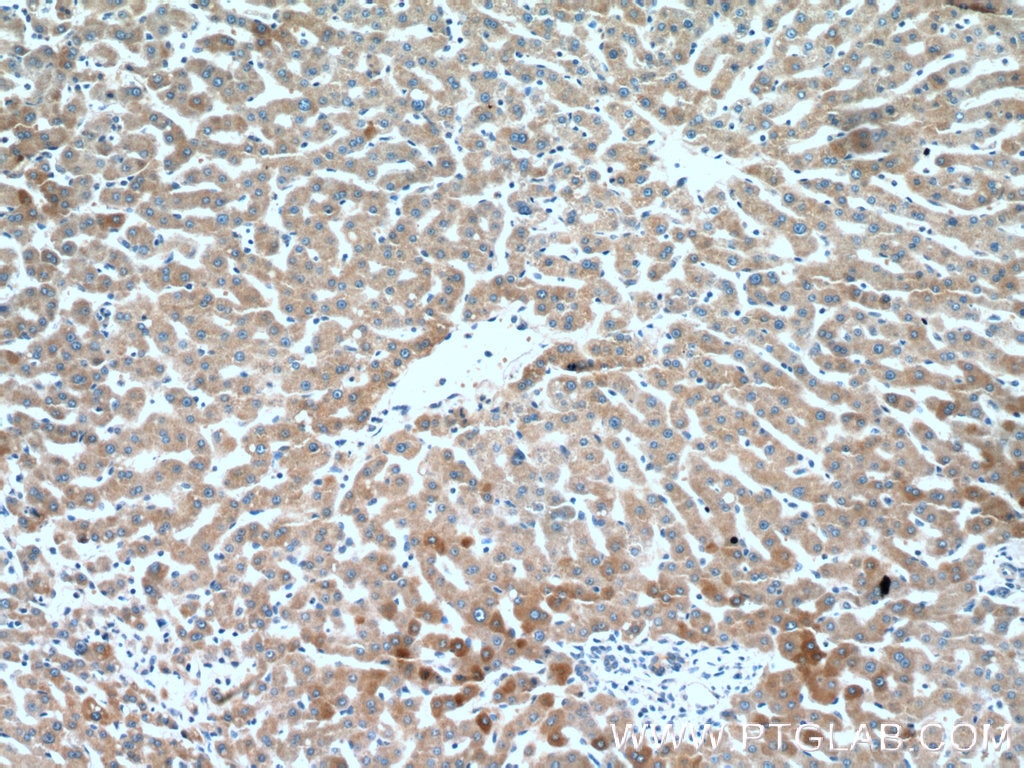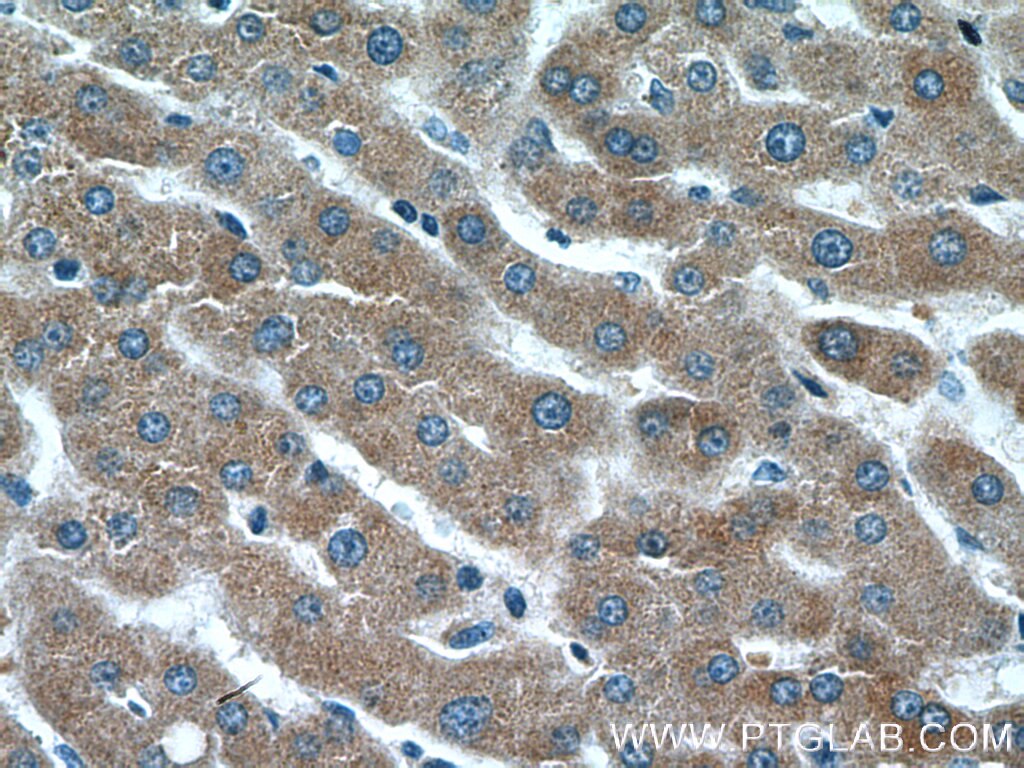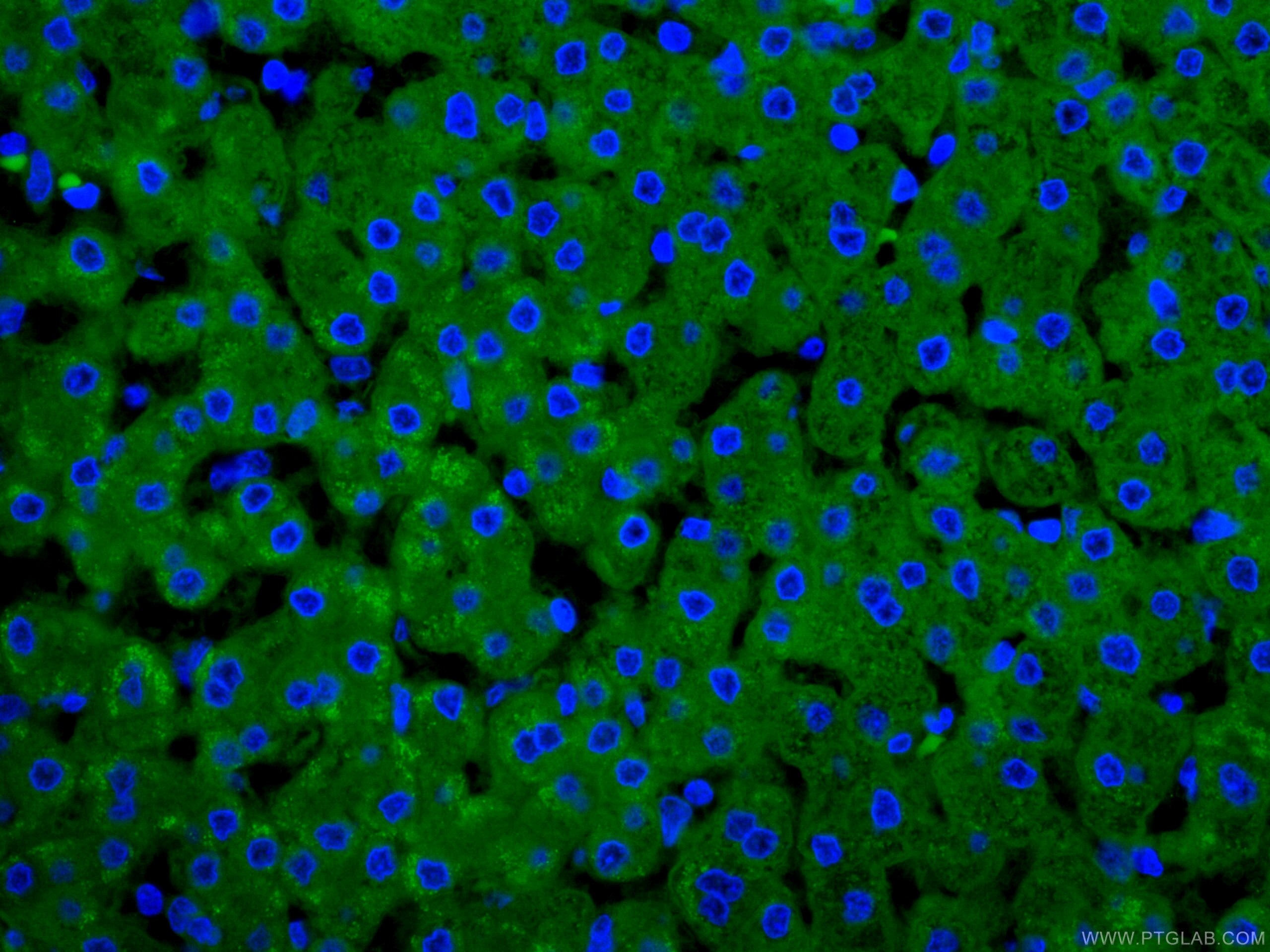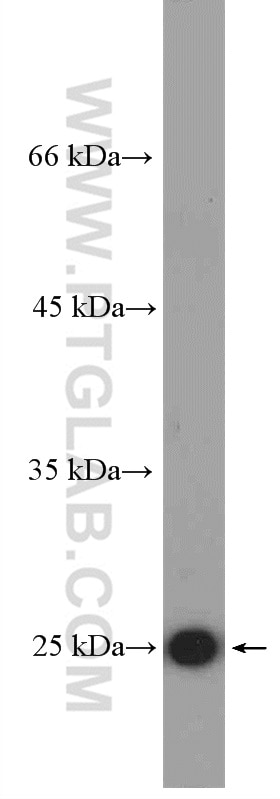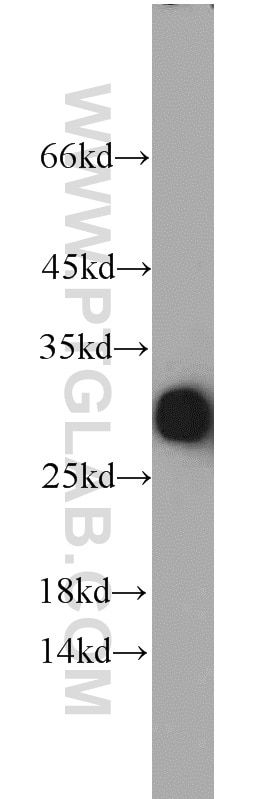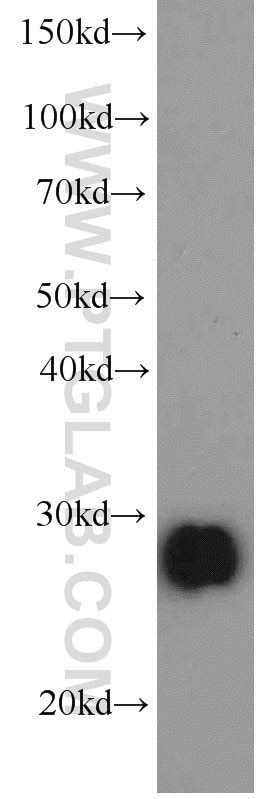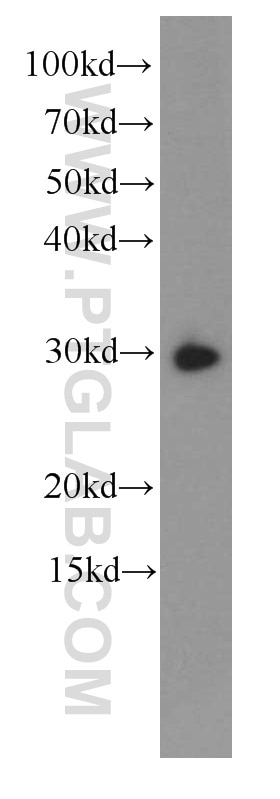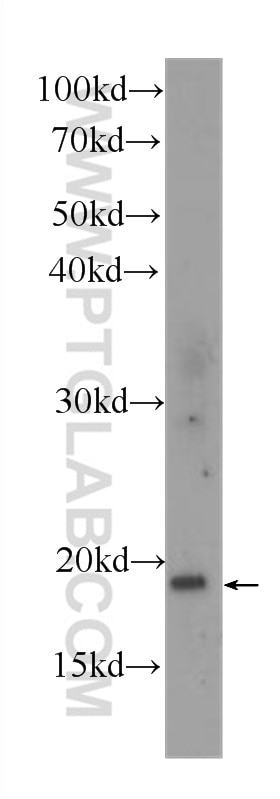Anticorps Monoclonal anti-CRP
CRP Monoclonal Antibody for IF, IHC, WB,ELISA
Hôte / Isotype
Mouse / IgG2a
Réactivité testée
Humain, porc, rat, souris et plus (1)
Applications
WB, IHC, IF, ELISA
Conjugaison
Non conjugué
CloneNo.
3F10A11
N° de cat : 66250-1-Ig
Synonymes
Galerie de données de validation
Applications testées
| Résultats positifs en WB | sérum de souris injecté avec des bactéries, sérum de souris injecté avec le tissu bactérien, tissu hépatique de porc, tissu hépatique de rat |
| Résultats positifs en IHC | tissu hépatique humain il est suggéré de démasquer l'antigène avec un tampon de TE buffer pH 9.0; (*) À défaut, 'le démasquage de l'antigène peut être 'effectué avec un tampon citrate pH 6,0. |
| Résultats positifs en IF | tissu hépatique humain, |
Dilution recommandée
| Application | Dilution |
|---|---|
| Western Blot (WB) | WB : 1:2000-1:10000 |
| Immunohistochimie (IHC) | IHC : 1:50-1:500 |
| Immunofluorescence (IF) | IF : 1:50-1:500 |
| It is recommended that this reagent should be titrated in each testing system to obtain optimal results. | |
| Sample-dependent, check data in validation data gallery | |
Applications publiées
| KD/KO | See 1 publications below |
| WB | See 6 publications below |
| IHC | See 1 publications below |
| IF | See 1 publications below |
Informations sur le produit
66250-1-Ig cible CRP dans les applications de WB, IHC, IF, ELISA et montre une réactivité avec des échantillons Humain, porc, rat, souris
| Réactivité | Humain, porc, rat, souris |
| Réactivité citée | rat, Humain, singe, souris |
| Hôte / Isotype | Mouse / IgG2a |
| Clonalité | Monoclonal |
| Type | Anticorps |
| Immunogène | CRP Protéine recombinante Ag9883 |
| Nom complet | C-reactive protein, pentraxin-related |
| Masse moléculaire calculée | 224 aa, 25 kDa |
| Poids moléculaire observé | 27 kDa |
| Numéro d’acquisition GenBank | BC020766 |
| Symbole du gène | CRP |
| Identification du gène (NCBI) | 1401 |
| Conjugaison | Non conjugué |
| Forme | Liquide |
| Méthode de purification | Purification par protéine A |
| Tampon de stockage | PBS avec azoture de sodium à 0,02 % et glycérol à 50 % pH 7,3 |
| Conditions de stockage | Stocker à -20°C. Stable pendant un an après l'expédition. L'aliquotage n'est pas nécessaire pour le stockage à -20oC Les 20ul contiennent 0,1% de BSA. |
Informations générales
C-reactive protein (CRP) is an acute-phase serum protein synthesized by the liver in response to interleukin-6 (IL-6) during inflammation. The name of CRP derives from its ability to react with the C polysaccharide of Streptococcus pneumoniae. CRP is an annular, pentameric protein that belongs to the pentraxin family of proteins. CRP displays several functions associated with host defense: it promotes agglutination, bacterial capsular swelling, phagocytosis and complement fixation through its calcium-dependent binding to phosphorylcholine. It is used mainly as a marker of inflammation.
Protocole
| Product Specific Protocols | |
|---|---|
| WB protocol for CRP antibody 66250-1-Ig | Download protocol |
| IHC protocol for CRP antibody 66250-1-Ig | Download protocol |
| IF protocol for CRP antibody 66250-1-Ig | Download protocol |
| Standard Protocols | |
|---|---|
| Click here to view our Standard Protocols |
Publications
| Species | Application | Title |
|---|---|---|
Nat Commun Macrophage lineage cells-derived migrasomes activate complement-dependent blood-brain barrier damage in cerebral amyloid angiopathy mouse model | ||
Front Immunol Binding of Macrophage Receptor MARCO, LDL, and LDLR to Disease-Associated Crystalline Structures. | ||
Sci Rep A label-free fiber optic SPR biosensor for specific detection of C-reactive protein. | ||
Sci Rep C-reactive protein (CRP) recognizes uric acid crystals and recruits proteases C1 and MASP1. | ||
Brain Behav Prenatal stress induced depressive-like behavior and region dependently high CRP level in offspring rats. | ||
Int J Radiat Oncol Biol Phys Identification of Novel Biomarkers for Acute Radiation Injury Using Multiomics Approach and Nonhuman Primate Model |
